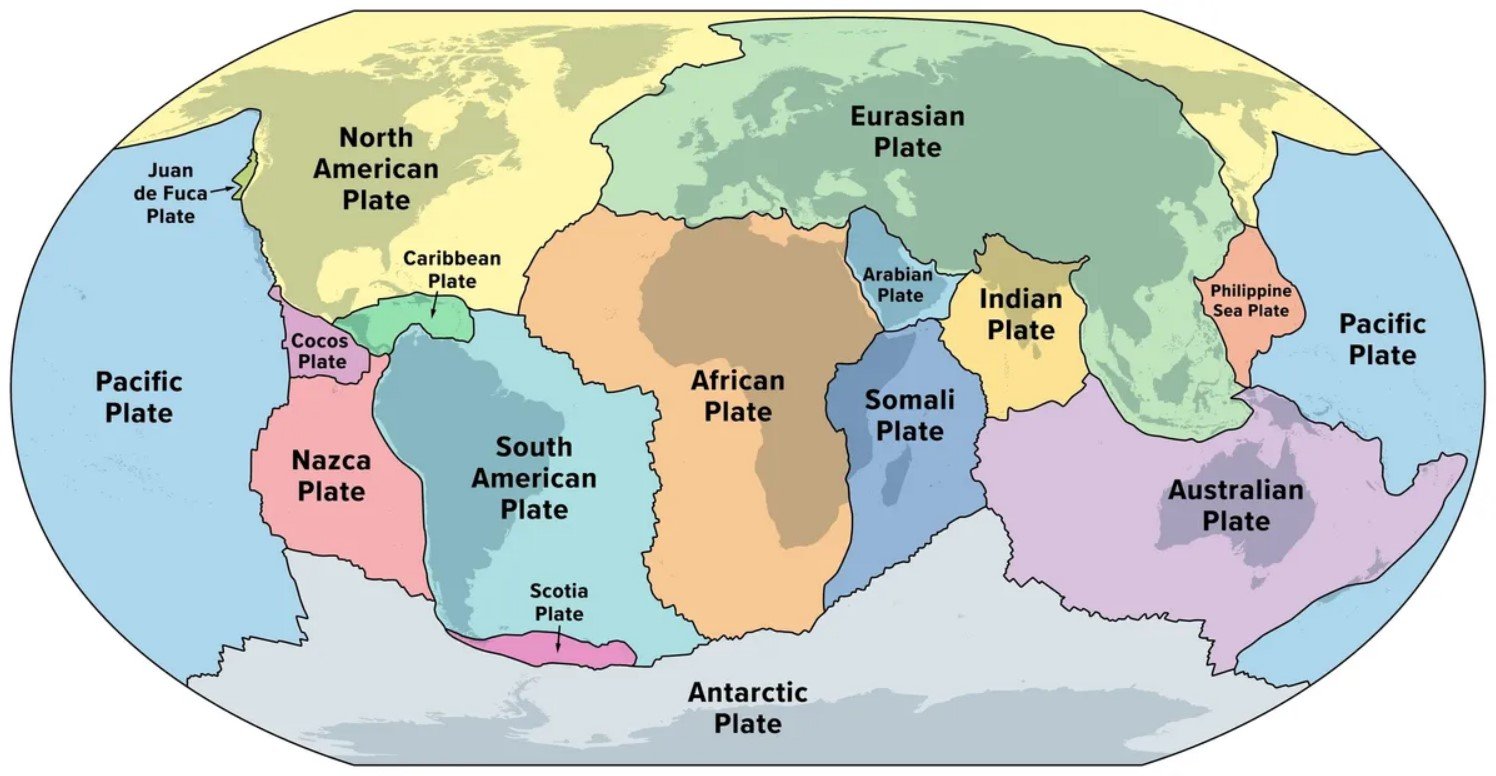Australia is currently the world's fastest-moving continent, atop the Indo-Australian tectonic plate, which is drifting at a rate of approximately 7 cm per year. This speed is roughly between the rate at which human hair and fingernails grow.
According to the U.S. National Oceanic and Atmospheric Administration (NOAA), tectonic plates on Earth move an average of about 1.5 cm per year. Compared to that rate, Australia is far ahead of other continents as it continues to drift northward.
Technically, the Indo-Australian plate encompasses not only the Australian mainland and Tasmania, but also parts of Papua New Guinea, New Zealand, and a large area of the Indian Ocean.

Map of Earth's major tectonic plates. (Image: GI/Shutterstock)
According to predictions, in the next tens of millions of years, the Indo-Australian plate is likely to collide with the bottom of the Eurasian plate in the region of Southeast Asia and China, forming a new supercontinent that some scientists call "Austrasia".
This is not unprecedented in Earth's history. About 200 million years ago, Australia was still part of Gondwana – the massive supercontinent that once occupied much of the Southern Hemisphere. Gondwana included the Antarctic, South American, Indo-Australian, and African plates, all connected. Meanwhile, Laurasia – the precursor to present-day Europe, Asia, and North America – lay in the Northern Hemisphere.
It's important to remember that the Earth's surface is always in motion – albeit very slowly. We don't perceive this change in our daily lives, but the reality is that our planet is not as "still" as it appears.
Tectonic plates are constantly shifting: some collide, some break apart. Instead of picturing the Earth as a solid block of rock, imagine it as a cracked road surface moving slowly on a giant conveyor belt. Some cracks widen, some compress – and the entire surface is shifting, just too slowly for us to perceive with the naked eye.
Although this rate of movement is slow by human standards, it is still fast enough to impact modern technology. Satellite navigation systems like GPS rely on fixed coordinates to determine location. However, as tectonic plates move, the actual positions of points on Earth begin to deviate from their positions recorded on maps.
Australia is a prime example: until 2017, it was still using a coordinate system from 1994. Over those 23 years, the Australian continent shifted 1.6 meters from its original position, necessitating an update to the system. In fact, Australia officially “moved” approximately 1.8 meters to the northeast.
Ha Trang (according to IFL Science)
Source: https://www.congluan.vn/luc-dia-nao-cua-trai-dat-di-chuyen-nhanh-nhat-va-no-di-chuyen-ve-dau-post341603.html



































































































Comment (0)